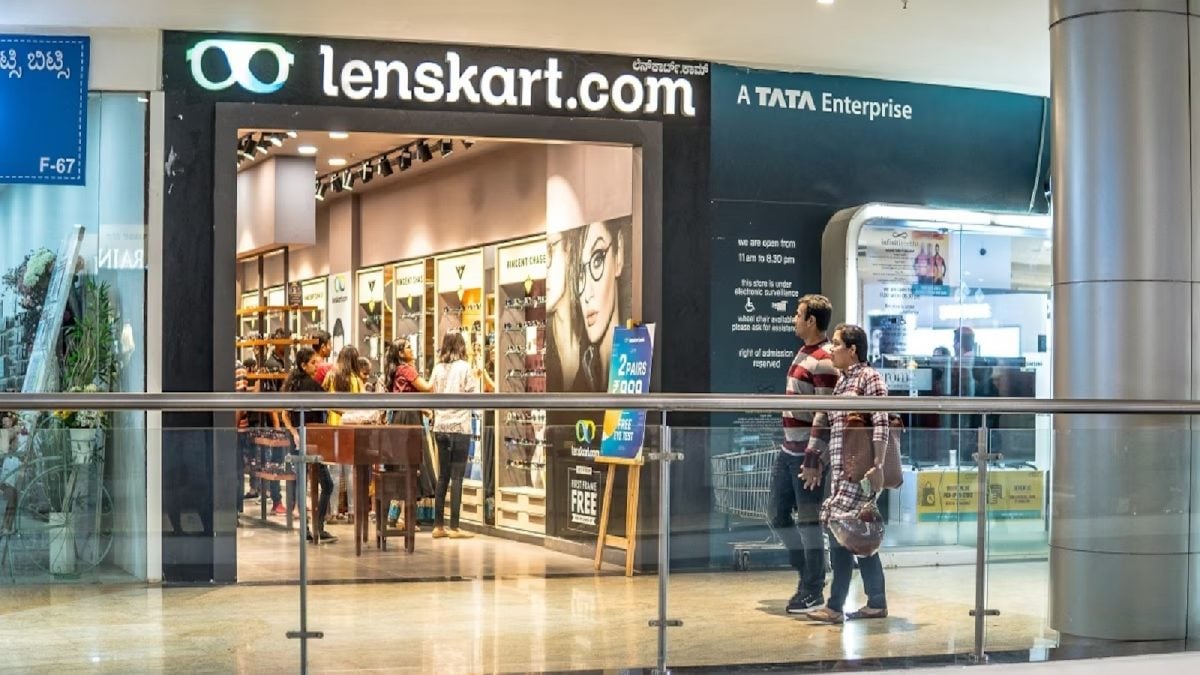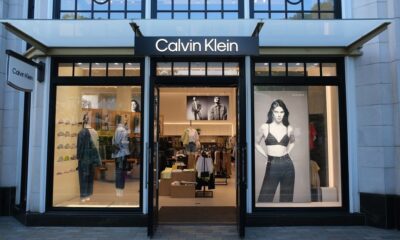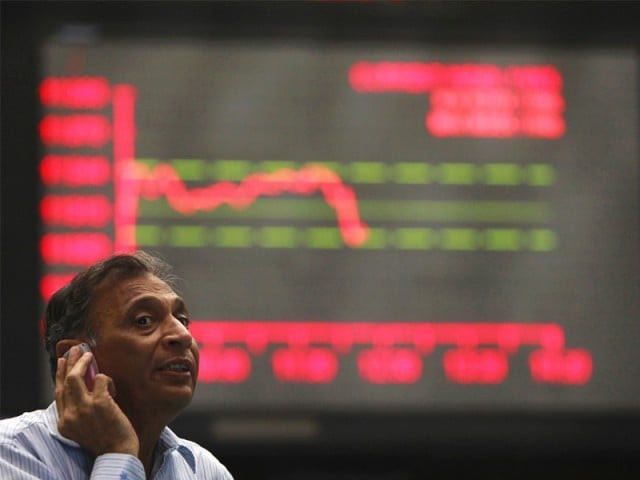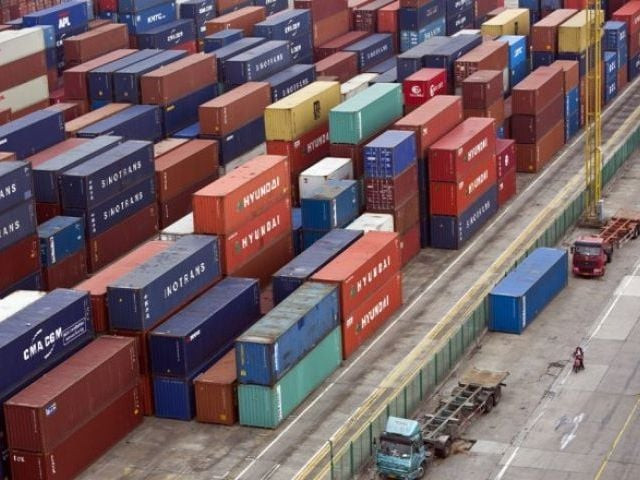Business
This doctor raised $130 million from Michael Dell, Jim Breyer and others to try to fix health care

Dr. Clay Johnston, co-founder and chief medical officer of Harbor Health.
Courtesy of Harbor Health
A version of this article first appeared in CNBC’s Inside Wealth newsletter with Robert Frank, a weekly guide to the high-net-worth investor and consumer. Sign up to receive future editions, straight to your inbox.
When tech founder Michael Dell and his wife Susan founded their namesake medical school at the University of Texas at Austin, their mission was to promote value-based health care, a model that rewards providers for better patient outcomes.
Dr. Clay Johnston, the first dean of Dell Medical School, later learned the hard part wasn’t improving treatment outcomes and at a lower cost, he told CNBC. The sticking point was getting insurance providers to pay for it, he said.
So in 2021, he left the medical school with Dell’s blessing to launch clinic startup Harbor Health. The company, based in Austin, Texas, is a “pay-vider” that offers its own insurance plans and owns and operates 43 primary care and specialty care clinics in four metro hubs in Texas.
Dell’s family office, DFO Management, has backed Harbor since its inception.
“Michael was excited about what we had built at the medical school, and he understood the limitations of that,” said Johnston, who serves as Harbor Health’s chief medical officer.
In September, Harbor raised $130 million from DFO alongside Jim Breyer’s namesake venture capital firm, family office Martin Ventures and others to expand its chain of primary care clinics in Texas and expand its insurance business. Harbor has raised $258 million since launching in 2022.
Owning clinics and the insurance company requires a massive war chest, but it’s necessary, said Johnston, a neurologist and epidemiologist.
“The reason we do that is so that we have full control of the dollars, so that we can take responsibility for people’s health and use those dollars for whatever makes sense for people to have better health outcomes,” he explained. “We can push technologies, and we don’t have to be focused on on visits.”
Johnston also knew Breyer and Charlie Martin, principal of Martin Ventures, from his work at Dell Medical School. Both have been backers since Harbor’s early days.
Martin, a serial CEO of hospital operators, backs firms focused on improving patient outcomes and healthcare costs. Breyer was drawn to the applications of artificial intelligence in healthcare at the medical school and at Harbor, Johnston said.
“He just brings people together, and he has wonderful insights, particularly about technology and how it’s going to evolve,” Johnston said of Breyer.
Harbor analyzes medical data to predict patient care costs and whether a patient is at high risk of developing a specific condition, requiring a surgery or needing hospitalization. This AI analysis enables Harbor to provide more care to patients before their condition worsens, according to Johnston.
While family office deal-making has declined markedly in 2025, healthcare is one of the few sectors still garnering interest. A recent family office survey by Goldman Sachs found that 28% of family offices planned to be overweight healthcare over the next 12 months and only 10% intended to be underweight, the best metrics of any sector other than technology.
Johnston said the capital-intensive nature of health care can be “hard to stomach” for some investors, but he said his experience with raising donations for the medical school bears many similarities to selling investors on the vision for Harbor Health.
“The people you’re selling to on the venture side are mostly looking at the financial likelihood of return. It’s nice to have an ambitious vision that’s potentially more disruptive and has the potential to to yield financial rewards, but it stops there,” he said. “The execution piece becomes more important.”
Business
Lenskart IPO Allotment Today: GMP Jumps To 11%; Here’s How To Check Status Online

Last Updated:
Lenskart IPO Allotment Today: Lenskart Solutions IPO saw strong demand with 28.27x subscription.

Lenskart IPO Allotment Today
Lenskart IPO GMP Today, Lenskart IPO Allotment Today: The allotment of eyewear retailer Lenskart Solutions’ initial public offering (IPO) is likely to be concluded today, November 06, 2025. The issue received a strong demand with a 28.27x subscription in the three-day window, garnering bids for 2,81,93,62,630 shares as against the 9,97,42,748 shares on offer.
Shares of Lenskart Solutions are expected to be listed on the BSE (Bombay Stock Exchange) and NSE (National Stock Exchange) on Monday, November 10.
Its retail category has received a 7.56x subscription, while the NII (non-institutional investor) quota has received a 18.23x subscription. The QIB category received a 40.36x subscription.
The IPO was opened on October 31 and closed on November 4.
The company has fixed the price band at Rs 382-402 per share for its IPO. At the upper end of the price band, Lenskart is seeking a valuation of around $7.91 billion (about Rs 72,700 crore).
The issue includes a fresh issue of shares worth Rs 2,150 crore, while the offer-for-sale (OFS) segment will see promoters and investors offloading more than 12.75 crore equity shares.
Investors who have applied for the IPO are advised to check the following links intermittently, as there’s no specific time when the allotment is likely to be concluded today.
Lenskart IPO Listing Price Prediction, GMP Today
According to market observers, unlisted shares of Lenskart Solutions Ltd are currently trading at Rs 447 apiece in the grey market, which is a 11.19% premium or GMP of Rs 45 over the upper IPO price of Rs 402, indicating decent listing gains for investors.
The GMP of Lenskart Solutions has been on the see-saw in the past few days, especially during the subscription window.
The GMP is based on market sentiments and keeps changing. ‘Grey market premium’ indicates investors’ readiness to pay more than the issue price.
Lenskart IPO: How To Check Allotment Status
Step-by-Step: How to Check Lenskart IPO Allotment Status
Option 1: Via Registrar’s Website (Link Intime India)
- Visit the Link Intime India IPO allotment page:https://www.linkintime.co.in/IPO/public-issues.html
- Select “Lenskart Solutions Limited – IPO” from the drop-down list.
- Choose one of the three identification options:
- PAN (Permanent Account Number)
- Application Number
- DP/Client ID (for demat account holders)
- Enter the chosen details correctly.
- Fill in the captcha code as shown on the screen.
- Click on “Submit” or “Search.”
- The screen will display your allotment status — showing whether you’ve been allotted shares and the quantity.
Option 2: Via BSE Website
- Visit the BSE IPO allotment page:https://www.bseindia.com/investors/appli_check.aspx
- Under “Issue Type,” select “Equity.”
- Under “Issue Name,” choose “Lenskart Solutions Limited.”
- Enter your Application Number and PAN.
- Complete the security captcha.
- Click on “Search.”
- Your allotment status will appear on the screen.
Option 3: Through Your Broker or Demat App
- Log in to your broker app (like Zerodha, Groww, Upstox, or Angel One).
- Go to the IPO section → “My Applications.”
- You’ll see the allotment status once it’s updated by the registrar.
About Lenskart
Founded in 2010, Lenskart began as an online eyewear retailer and has since grown into one of India’s leading omnichannel eyewear brands with both online and offline presence. The company was valued at $6.1 billion as of September 2025, according to Tracxn data cited by Reuters.
In June 2025, the company transitioned into a public limited entity, changing its name from Lenskart Solutions Private Limited to Lenskart Solutions Limited after an extraordinary general meeting held on May 30.
Disclaimer: The views and investment tips by experts in this News18.com report are their own and not those of the website or its management. Users are advised to check with certified experts before taking any investment decisions.

Varun Yadav is a Sub Editor at News18 Business Digital. He writes articles on markets, personal finance, technology, and more. He completed his post-graduation diploma in English Journalism from the Indian Inst…Read More
Varun Yadav is a Sub Editor at News18 Business Digital. He writes articles on markets, personal finance, technology, and more. He completed his post-graduation diploma in English Journalism from the Indian Inst… Read More
November 06, 2025, 06:52 IST
Read More
Business
Lucid misses Wall Street expectations, narrows production guidance

Brand new Lucid electric cars sit parked in front of a Lucid Studio showroom in San Francisco on May 24, 2024.
Justin Sullivan | Getty Images
DETROIT – Lucid Group missed Wall Street’s expectations for a second consecutive quarter as the all-electric vehicle maker continues to address problems with the launch of its new flagship Gravity SUV.
The company, for a second consecutive quarter, also cut the high end of its annual production guidance to around 18,000 vehicles from a previous forecast of between 18,000 and 20,000 units. Its original target for this year was 20,000 units. It also reduced the low end target of its capital expenditures by $100 million to between $1 billion and $1.2 billion.
Here’s how the company performed in the third quarter, compared with average estimates compiled by LSEG:
- Loss per share: $2.65 adjusted vs. a loss of $2.27 expected
- Revenue: $336.6 million vs. $379.1 million expected
Lucid reported a net loss for the quarter of $978.4 million, or $3.31 per share, compared with a net loss of $992.5 million, or $4.09 per share, in the same period last year. Adjusting for one-time items including restructuring, the company lost $2.65 a share.
The company’s adjusted earnings before interest, taxes, depreciation and amortization was a loss of $717.7 million vs. an expected loss of $597.4 million, according to estimates compiled by StreetAccount. That loss widened year-over-over by 17%. Its quarterly revenue increased roughly 68% from $200 million a year earlier.
Its quarterly revenue increased roughly 68% from $200 million a year earlier.
In addition to releasing its third-quarter results, Lucid said it has agreed to increase a delayed draw term loan credit facility from $750 million to roughly $2 billion from Saudi Arabia’s Public Investment Fund, the company’s largest shareholder.
The company reported total liquidity of $5.5 billion to end the quarter, including the undrawn credit line. Its cash and cash equivalents were roughly flat from the end of last year at $1.6 billion, with a total financial runway into the first half of 2027, the company said.
Lucid also said it continues to evaluate finance and liquidity options outside of the PIF as it launches its Gravity SUV and develops an upcoming midsize vehicle, which isn’t expected to start production until at least late next year.
An autonomous robotaxi from Uber’s partnership with Lucid and autonomous vehicle startup, Nuro.
Courtesy: Nick Twork | Lucid
Regarding Gravity, Lucid interim CEO Marc Winterhoff said the company “remains intensely focused on ramping up production and addressing the significant supply chain disruptions impacting the entire industry.”
During the company’s last quarterly results in August, Winterhoff admitted there were problems with Gravity, saying the company planned to significantly increase production during the second half of the year.
Winterhoff told investors Wednesday that the company continues to believe it can achieve a significant increase in Gravity deliveries during the fourth quarter, despite the supply chain issues and an industrywide slowdown in EV demand.
Lucid CFO Taoufiq Boussaid said Gravity production increased quarter-to-quarter but remains at an unmeaningful level.
The earnings results come roughly a month after Lucid reported third-quarter vehicle deliveries of 4,078 units, which increased from a year earlier but also fell slightly short of Wall Street expectations.
Lucid has made several partnership announcements this year. In July, it signed a $300 million deal with Uber that included the ride-hailing platform acquiring and deploying more than 20,000 Lucid Gravity SUVs over the next six years that will be equipped with autonomous vehicle technology from startup Nuro. More recently, it announced an expanded partnership with Nvidia for autonomous vehicle technologies.
Lucid’s results are in stark contrast to fellow pure EV company Rivian Automotive, which on Tuesday reported third-quarter earnings and revenue that topped Wall Street expectations and drove the stock price up during intraday trading Wednesday.
Shares of Rivian — following near-record gains Wednesday — are up roughly 16% in 2025, while Lucid remains off more than 40%, including a 1-for-10 reverse stock split this summer.
Business
Retailers are raising prices to meet tariffs. Amazon is hiking more than others

The Amazon Prime logo on a package in Manhattan, New York City, on Sept. 16, 2023.
Michael Kappeler | Picture Alliance | Getty Images
Tariffs imposed by the Trump administration have given the country’s retailers another cost to manage during a period of persistent inflation.
While many are navigating the change with limited price increases, marketplace giant Amazon is hiking more than others.
Price increases are common for retailers trying to blunt higher costs from tariffs. Companies including Walmart and Target have said they are employing a portfolio approach to pricing following the tariff hikes, meaning they have raised prices on some items but not others.
But the companies rarely detail how much they’re increasing prices or on what items.
Amazon prices have risen 12.8% this year on average as of the end of September, according to an analysis of online pricing data from third-party research firm DataWeave. Prices at Target were up 5.5% since the start of the year, and prices at Walmart were 5.3% higher, according to the analysis.
DataWeave reviewed roughly 16,000 items each on Amazon’s, Walmart’s and Target’s websites to conduct its analysis. The firm says it continuously collects publicly available data and captures live product and pricing information. Its data spans categories, locations and time periods, according to DataWeave’s methodology.
While each of the three retailers increased prices throughout the year, the sharpest increase came from Amazon between January and February, when prices on the surveyed SKUs — a retail industry term meaning stock keeping units — rose 3.7%, according to DataWeave’s analysis.
That jump actually came ahead of the majority of President Donald Trump’s tariffs, announced in April, and could be the result of price normalization and a pullback in discounts after the 2024 holiday selling season, DataWeave found. However, Target and Walmart increased prices by an average of 0.97% and 0.85%, respectively, during the same time frame.
DataWeave’s pricing analysis compares each retailer to its own prices over time and not to competitors — and to be sure, lower initial prices could show a higher percentage increase — but there is a common trend.
“Together, these trends show a clear hierarchy: Prices rose fastest where consumers shop by choice, not necessity, and most cautiously where they shop by need,” Karthik Bettadapura, co-founder and CEO of DataWeave, said in a statement.
Apparel prices, for example, rose 11.5% on average between January and the end of September at Amazon, Target and Walmart. Indoor and outdoor home goods prices climbed an average of 10.8% across the three retailers. Prices for pet goods and consumable products increased by an average of 6.1%, and health and beauty items saw prices jump 7% on average. Prices for hardlines, a category that tends to include goods like electronics, furniture and appliances, rose 8.3%.
At Amazon, however, prices for those same categories rose more on average than at Target or Walmart.
Apparel prices increased 14.2%, indoor and outdoor home goods prices rose 15.3%, pets and consumables prices rose 11.3%, health and beauty prices rose 13.2%, and hardlines category prices rose 11.9%.
Guru Hariharan, founder and CEO of AI-driven e-commerce data platform CommerceIQ, told CNBC he’s not surprised to see larger price increases on the marketplace leader.
“Third-party sellers are far more exposed to tariff-driven cost increases,” Hariharan said. “They don’t have the scale, inventory flexibility or private-label leverage that large retailers like Walmart or Target can use to offset costs.”
As a result, marketplace sellers often have no choice but to pass higher costs onto the shopper, he said.
While Target and Walmart also have online marketplaces, third-party sales make up a much smaller percentage of their revenue than Amazon’s, according to executives and earnings reports.
Many economists say the full impact of tariffs has yet to be felt throughout the economy as retailers work through inventory that came into the country at lower tariff levels.
“If we consider Amazon as the bellwether for U.S. commodity goods pricing, this trend is obviously expected to have a significant impact to the holiday season and economy in Q4,” Hariharan said.
Amazon’s shoppers don’t appear to be fazed by the pricing. The company said its online store sales grew 10% in the third quarter compared to the same period last year. Third-party seller services — the revenue Amazon collects on third-party sales, including commission, fulfillment, shipping and advertising fees — increased 12% over that same time.
During the company’s third-quarter earnings call, Amazon CEO Andy Jassy said, “We remain committed to staying sharp on price and meeting or beating prices of other major retailers.”
The company’s Chief Financial Officer Brian Olsavsky added, “Our sharp pricing, broad selection and fast delivery speeds continue to resonate with customers.”
In response to the DataWeave price analysis, an Amazon spokesperson told CNBC, “Across the selection of any large retailer, you can cherry pick products where prices have increased—if that’s what you’re looking for—and it’s just as easy to find products, in equally large volumes, that have decreased or stayed the same in price during the same time period.
“The reality is that we offer competitive, low prices for Amazon customers and, based on our comprehensive analysis of millions of popular products customers are purchasing, we have not seen increases in price outside of normal fluctuations,” the spokesperson said. “We continue to meet or beat prices versus other retailers across the vast selection of products in our store, and that’s why customers trust Amazon as a destination for low prices and why we continue to earn more sales from customers.”
Investors and shoppers will get their latest insights into how the largest U.S. retailers are handling pricing when Target and Walmart report their third-quarter results in mid-November.
Target has said on several occasions this year it would raise prices “as a last resort” as it combats rising costs. A company spokesperson, in response to the DataWeave findings, pointed CNBC to the example of holding prices on back-to-school items like crayons, notebooks and folders steady from 2024 to 2025.
Walmart told CNBC, “We will do everything we can to keep prices as low as possible for as long as possible.” The company noted it has permanently lowered prices on 2,000 items since February – as opposed to its temporary cuts known as Rollbacks.
In early September, Walmart CEO Doug McMillon said tariffs have created cost hikes for the company.
“We’ve seen a steady march up, kind of a gradual increase as it relates to our cost levels in general merchandise, which has created the single-digit inflation that we find ourselves dealing with now,” McMillon said at the Goldman Sachs global retailing conference.
The Federal Reserve estimates tariffs are contributing five-tenths or six-tenths to the core personal consumption expenditures price index, the central bank’s preferred measure of inflation, Fed Chairman Jerome Powell said last week. Excluding tariffs, Powell said core PCE could be in the 2.3% to 2.4% range, rather than the 2.9% that was recorded in August.
The widely watched consumer price index, a broader measure of inflation, showed a 3% increase year over year for September. Direct CPI comparisons for the categories in DataWeave’s study are difficult to pinpoint, but prices for household furnishings rose 3.7% from January through September of this year. Personal care items increased 3.5% over the same period, and apparel prices were up 2.1%, according to CPI data.
— CNBC’s Nick Wells and Jodi Gralnick contributed to this report.
Editor’s note: This article has been updated to include Amazon’s full statement to CNBC in response to the DataWeave findings.
-

 Tech1 week ago
Tech1 week agoOpenAI says a million ChatGPT users talk about suicide
-

 Tech1 week ago
Tech1 week agoUS Ralph Lauren partners with Microsoft for AI shopping experience
-

 Tech1 week ago
Tech1 week agoHow digital technologies can support a circular economy
-

 Sports1 week ago
Sports1 week agoBilly Bob Thornton dishes on Cowboys owner Jerry Jones’ acting prowess after ‘Landman’ cameo
-

 Tech1 week ago
Tech1 week agoAI chatbots are becoming everyday tools for mundane tasks, use data shows
-

 Fashion1 week ago
Fashion1 week agoITMF elects new board at 2025 Yogyakarta conference
-

 Business1 week ago
Business1 week agoLucid targets industry-first self-driving car technology with Nvidia
-

 Fashion1 week ago
Fashion1 week agoCalvin Klein launches Re-Calvin take-back programme across the US









